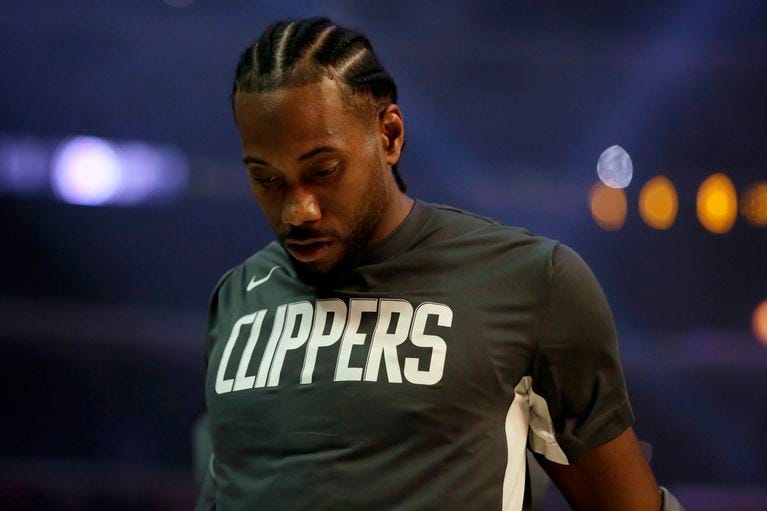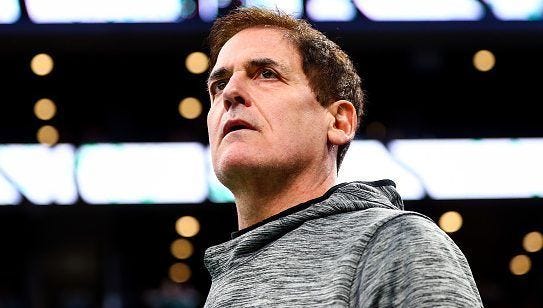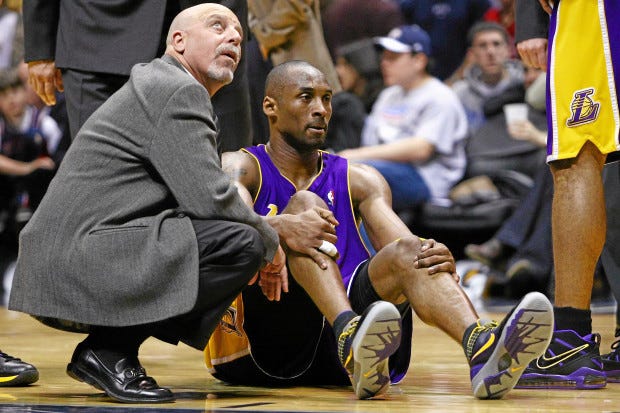What load management actually means…
In the past few weeks following LA Clippers’ decision to rest their star player Kawhi Leonard there has been a lot talks about “load management”.
Following additional review of the LA Clippers not playing Kawhi Leonard in last game against the Milwaukee Bucks, the NBA has confirmed that the team’s decision to sit Leonard for management of an injury was consistent with league rules. The team has reasonably determined that Leonard is suffering from an ongoing injury to the patella tendon in his left knee and has been placed by the team at this time on an injury protocol for back-to-back games.”
“The NBA has fined the Clippers $50,000 for statements, including by head coach Doc Rivers, that were inconsistent with Leonard’s health status.”
After Wednesday’s game, here’s what Rivers said regarding Kawhi’s health: “He feels great. But he feels great because of what we’ve been doing, you know. We’re just going to continue to do it. There’s no concern here. But we want to make sure. I think Kawhi made a statement that he’s never felt better. It’s our job to make sure he stays that way. That’s important. But he played a lot of minutes in the playoffs last year. So it’s not, uh, a health thing really. It is in some ways. We want him to just keep feeling better and getting better.”
Before we get into the controversy around load management, let’s take a look at how people around the NBA league reacted about the LA Clippers’ decision to rest their star player:
 Dallas Mavericks owner Mark Cuban loves load management, citing it as “the best thing to ever happen to the league.” He points to the wisdom of keeping players in top shape longer, making sure they are available when the games count most in the postseason. “The dumb thing,” Cuban says, “would be to ignore the science.”
Dallas Mavericks owner Mark Cuban loves load management, citing it as “the best thing to ever happen to the league.” He points to the wisdom of keeping players in top shape longer, making sure they are available when the games count most in the postseason. “The dumb thing,” Cuban says, “would be to ignore the science.”
 But some people around the league are not fan of load management, starting with Michael Jordan. In fact, according to Orlando Magic coach Steve Clifford, the former coach of the Charlotte Hornets, Jordan himself made it very clear that there were no off games for the players on that roster.
But some people around the league are not fan of load management, starting with Michael Jordan. In fact, according to Orlando Magic coach Steve Clifford, the former coach of the Charlotte Hornets, Jordan himself made it very clear that there were no off games for the players on that roster.
“Our guys aren’t used to sitting on the second game of a back-to-back. We’re not sitting guys just to sit,” Clifford said via The New York Daily News. “For me, my background frankly, it all goes back to expectations. Being with Michael in Charlotte, Michael used to tell them every year, you’re paid to play 82 games.”
 Gary Vitti, a former head athletic trainer of the Lakers, remembers that load management did not even exist when he joined the NBA league in 1984.
Gary Vitti, a former head athletic trainer of the Lakers, remembers that load management did not even exist when he joined the NBA league in 1984.
“The big buzz words in the NBA today are “load management”. When I broke into the NBA in 1984 the thought of players taking a night off to rest did not exist. In fact, one year Wilt Chamberlain averaged more than forty-eight minutes a game. He was never subbed out, fouled out or thrown out. He played every minute of regulation and every minute of overtime for the entire season”, explains Gary Vitti.
In the 1961-62 NBA season, Chamberlain played all 82 games, averaging 48.5 minutes a game. Note: NBA games are 48 regulation minutes in duration. Including overtime, he missed a total of eight minutes all season.
Gary Vitti even believes that NBA players back then actually took pride about playing all 82 games during the regular season:
“There was a time in the NBA that players took pride in playing all 82 games. It was considered as an important variable in the game. That variable is disappearing. It makes you wonder how much better the great superstars of the eighties and nineties could have performed with more rest.
 Picture: Gary Vitti, Kobe Bryant (LA Lakers / NBA)
Picture: Gary Vitti, Kobe Bryant (LA Lakers / NBA)
So what exactly is load management?
Load management is a program employed by NBA teams and players to monitor the physiological stress (or load) a player endures doing any number of activities.
Minutes played in live games is just one of many elements measured when examining a player’s load relative to his capacity. A player exerts himself during practices, individual skill sessions, cardio work, dynamic warm-up routines, postgame recovery regimens, cross-country flights, lack of sleep, you name it. All of this info is fed into the load management program, and a group consisting of the player, training staff, sports scientists, coaches, management and, often, ownership collaborate to look at the biometric data and determine when that player is bumping up against his load capacity.
“Loading management is about lowering the threshold of load on a player so that he’s able to recover and decrease the risk of injury or chronic fatigue,” said Dr. Marcus Elliott, founder and director of the Peak Performance Project.
When a player exceeds his capacity, he’s considerably more likely to get injured.
Gary Vitti went on to explain in more details how to measure load management:
According to Mr Vitti, load is a combination of physical stressors and non-physical stressors. The external stimulus applied to an individual is referred to as external load which can be measured by:
GPS
ACCELEROMETERS
GYROSCOPES
CHRONOMETERS
DYNAMOMETERS
CAMERA TECHNOLOGY
Internal load is the physiological and psychological response to external load combined with non-physical stressors. Gabbett’s work reported in the British Journal of Sports Medicine states that Internal load is measured by a Rated Perception of Exertion (RPE) scale. The scale ranges from 0=rest to 10=max difficulty. Combining the RPE with duration of a workout we can monitor the response of the load on an athlete and then create an acute (7 days) to chronic (28 days) workload ratio.
SESSION LOAD = RPE X DURATION (in Minutes)
DAILY LOAD = SUM OF ALL SESSION LOADS IN A 24 HOUR PERIOD
WEEKLY LOAD = SUM OF ALL DAILY LOADS FOR 7 DAYS
MONOTONY = ONE STANDARD DEVIATION OF WEEKLY LOAD
STRAIN = DAILY OR WEEKLY LOAD X MONOTONY
Optimal monitoring of workload requires daily monitoring of internal and external load and monitoring the acute to chronic workload ratio. Hulin et al report in the British Journal of Sports Medicine that the higher the acute workload compared to the chronic workload the greater fatigue factor and the higher risk of injury. Technology helps Mr Vitti determine where the earlier mentioned sweet spot is because it exists in a place where the acute workload never exceeds the chronic workload.
Foster et al reported in the Wisconsin medical journal that 89% of injuries and illnesses correlated to a spike in strain 10 days prior to the incident. Gabbett also reported that load increases equal to or greater than 15% from the preceding week increases injury risk by 50%.
Gary Vitti explained how he invested in the DorsaVi ViPerform wireless sensor technology. The DorsaVi system was designed for athletes to assess injury risk, guide training programs and determine return to play. The system consists of wearable motion and muscle activity sensors that record data at 200 frames per second. Mr Vitti’s plan was to assess all players for a baseline in the offseason and prior to training camp. The technology could also be used to monitor load through the season. It could easily be done by putting sensors on one big and one small every practice day.
To know what information is pertinent Mr Vitti believes that you must understand your sport and the demands needed to compete at that level and technology has helped understand the demands of NBA basketball. Every arena in the NBA is equipped with the Second Spectrum high speed 6 camera system that shoots 25 frames per second. The system recognizes all 13 participants on the playing court, 5 players on each team and 3 officials. This technology gives trainers the number of accelerations and decelerations and the trajectory of each throughout the game. It is then possible to extrapolate the average speed of each player and the distance they ran. An equation can then be created to determine load and intensity.
AVERAGE SPEED X DISTANCE X BODY WEIGHT = LOAD
LOAD DIVIDED BY MINUTES PLAYED = INTENSITY
Gary Vitti believes that one of the best way to assess load management is to look at the linear relationship between load and intensity:
“What we were looking for was a direct linear relationship between load and intensity. If load went up we wanted to see intensity to go up with it. If it did we slotted that individual into a green zone, meaning push training. If intensity began to flatten then we slotted that individual into a yellow zone, meaning he is on our radar for decreased performance and increased risk of injury which leads us to look closer at the external and internal loads. Obviously, if intensity is crashing, we are probably at a very low-performance state and high injury risk which would require shutting the player down until corrections can be made to meet the needs of the sport”.
Bottom line: Load management will continue to be a national debate around the NBA league for some time. NBA teams will continue to protect their players, make sure that they are healthy and prevent injuries, even if it means missing games. Fans and broadcasters, on the other hand, want the the best players to play games all the time. This is why this debate around load management will continue to be controversial.
| 1 |

Leave A Comment
You must be logged in to post a comment.